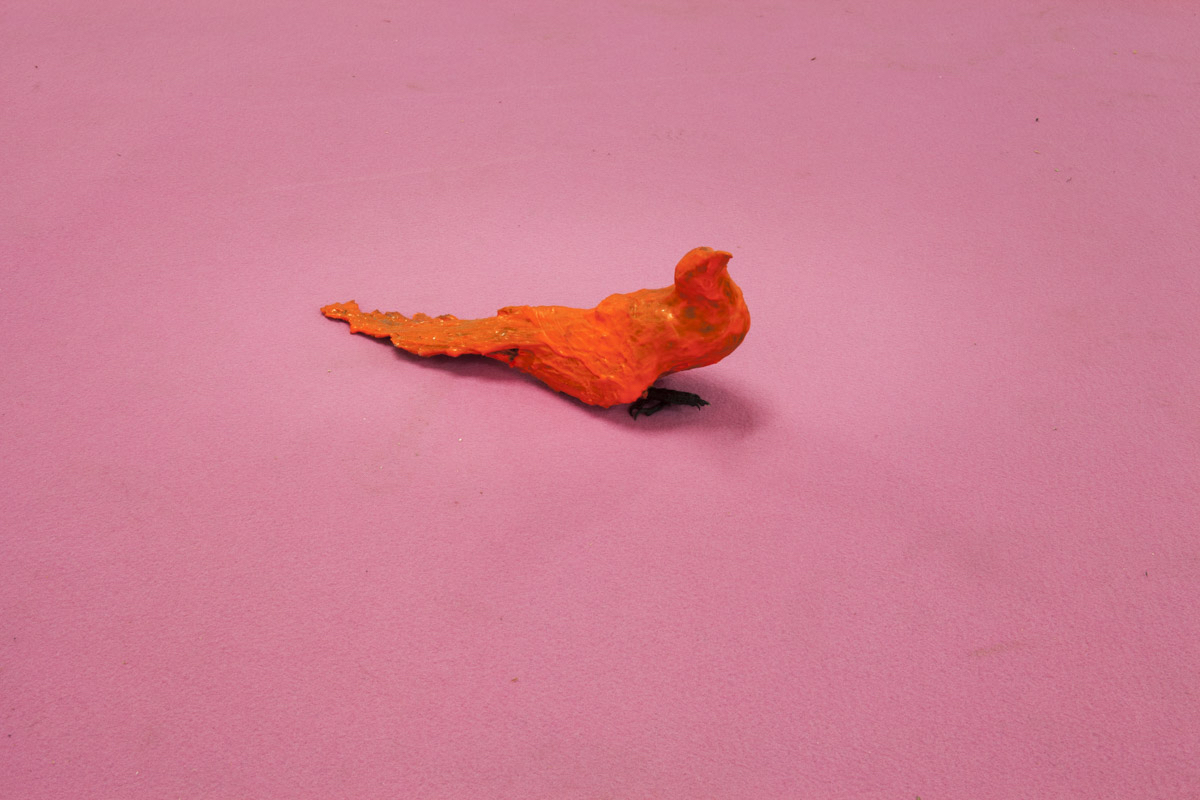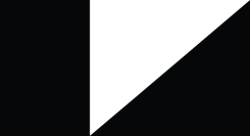Stijn Elshuis
Interview: Thomas Van Loocke
Your unusual presentation is not immediately visible, but once we round the corner we are bombarded with bright colours, both in the large photographs of trees on Dibond that are leaning against the walls and the coloured branches that are lying on the floor. The works on Dibond are placed in front of each other and that makes you the only one of the fourteen participants that hides works or large sections of works. Why? Couldn’t you choose between them?
No, it was that it was so important to me to not only show photographs. I had more of a total installation in mind, hence the sculptures. And so I didn’t want to hang my photographs on the wall in the conventional way either. They’re part of a project that I hope to continue for the rest of my life. I intend to make as many of these types of tree as possible, to form a forest. What I’m actually doing is establishing an artificial forest.
This scheme is the reason that you place works in front of each other?
Exactly. It creates a sort of forest and a form of multi-dimensionality.
Are you going for a deciduous or a coniferous forest?
(laughs) I like these different species to be together. My work is very concerned with artificial nature and the question of the role that nature will play in our future. A future where we will be able to solve a lot of issues with technology but where, in my opinion, we’ll still need nature: not only for our basic needs, our oxygen, but also for our state of mind. I’m really looking for the boundary between artificiality and naturalness. I find it really interesting, for example, to ask if we can actually call these works photographs of trees. In reality they are very heavily manipulated photographs of scale models. So they are far removed from being real trees, and yet that’s what I consider my work to be.
The landscapes in which your trees appear and the two branches that lie on the floor are in unnatural colours. Are the interplay and contrasts between your photographs (“naturalized” pieces of plastic) and sculptures (synthetic-coated branches) deliberate?
Exactly. For me, it’s very much about looking for this borderline and it can indeed be done in several ways. I made, for example, a series of stuffed birds dipped in latex. I look for different ways to communicate this basic concept.
What caused this fascination?
Hmm… On the one hand, I was brought up in a city, Amsterdam, and on the other, I spent all my holidays in the countryside in France. Although I’ve lived all my life in a city, I often feel the need to get out into nature. Perhaps that’s the reason for this duality. In any case, it’s the subject that’s been occupying me for a long time, in fact, during my entire studies. How we, urbanites, relate to nature. The topic has manifested in very different ways, but it has certainly been the common thread.
Can you tell us about some of those manifestations?
I spent a long time making a dystopian scale model, for example. I covered landscapes with tar. Everything pretty dark. I think that I’ve become a little more positive in recent years.
Why? Just getting older?
Yeah, because I’m getting older but also because at some point I decided that it might be a good idea to not choose that side. That work gave the impression that I was saying that everything is going to end badly whereas now I tend to start a work more open-endedly. How will the future look? How do we perceive nature? I think that you as a viewer now need to do far more than just absorb a message.
So you don’t expect that there will only be artificial trees and saturated colours left?
(laughs) No, definitely not. This is more about questioning things and making people think.
Do you mean that you want to enhance our ecological awareness and our concern for parks and woods?
For me, the scope is much broader than that. I think it can also be about plastic surgery, for example, or the idea that we will all just be living in a computer game. Those ideas are also part of it. I think that you can perceive it at many more levels than just that it’s about nature. It’s about artificiality in general.







